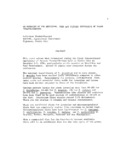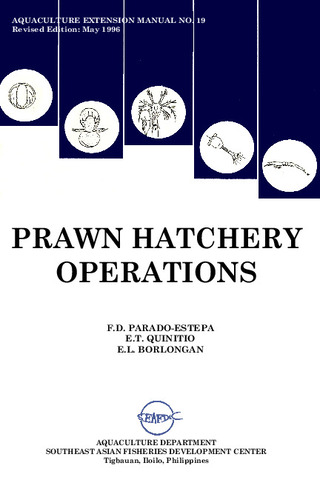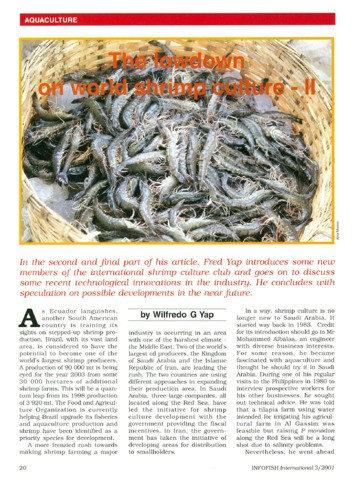The effect of diet on the reproductive performance of pond-reared Penaeus monodon Fabricius broodstock
Share
Abstract
Three practical diets were tested for their effects on the reproductive performance, survival and larval quality of pond-reared Penaeus monodon. Diets A, B and C were formulated to contain the same basal components but supplemented with different sources of lipids. Lipid sources were cod liver oil (Diet A), soybean lecithin (Diet C) or their 1:1 combination (Diet B). An all-natural diet consisting of squid and marine annelids served as control. Pond-raised P. monodon were stocked in four 12-m3 flow-through maturation tanks with 28 females and 22 males per tank. Broodstock were acclimated to the diets prior to unilateral ablation of females. Reproductive performance in terms of total number of spawnings, eggs and nauplii production, average hatch rate of eggs and larval quality was best for Diet A followed by Diet C. Diet B gave the poorest overall response but was better than the control. In the control most of the mature females resorbed their ovaries and failed to spawn; survival rates of females was also lowest. The results suggest that nutritional quality of broodstock diet affects reproduction and larval survival. Diet A (cod liver oil supplemented) was found to be a suitable diet for successful maturation and spawning of pond-reared P. monodon.
Suggested Citation
Millamena, O. M., Primavera, J. H., Pudadera, R. A., & Caballero, R. V. (1986). The effect of diet on the reproductive performance of the pond-reared Penaeus monodon Fabricius broodstock. In J. L. Maclean, L. B. Dizon, & L. V. Hosillos (eds.), The First Asian Fisheries Forum: Proceedings of the First Asian Fisheries Forum, Manila, Philippines, 26-31 May 1986. (pp. 593–596). Manila, Philippines: Asian Fisheries Society.
Subject
Taxonomic term
Collections
Related items
Showing items related by title, author, creator and subject.
-
An overview of the nutrition, feed and feeding techniques of prawn penaeid/shrimps
Piedad-Pascual, Felicitas (Philippine Council for Aquatic and Marine Research and Development, 1989)This paper echoes what transpired during the first International Conference of Penaeid Prawns/Shrimps held in Iloilo City in December 4-7, 1984, particularly on the Nutrition nd Feed Development. Around 25 papers were ... -
Prawn hatchery operations
Parado-Estepa, Fe D.; Quinitio, Emilia T.; Borlongan, Emeterio L. (Aquaculture Department, Southeast Asian Fisheries Development Center, 1996-05)The manual, an updated version of the 1984 SEAFDEC/AQD manual, presents the underlying principles and step-by-step instructions of prawn larval and post-larval rearing. The techniques described are not only applicable to ... -
The lowdown on world shrimp culture - II
Yap, Wilfredo G. (INFOFISH, 2001)This paper introduces some new members of the international shrimp culture club and goes on to discuss some recent technological innovations in the industry, particularly the polyculture of tilapia (mainly Oreochromis ...






